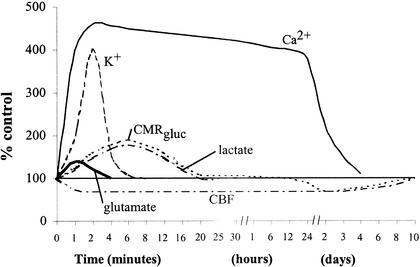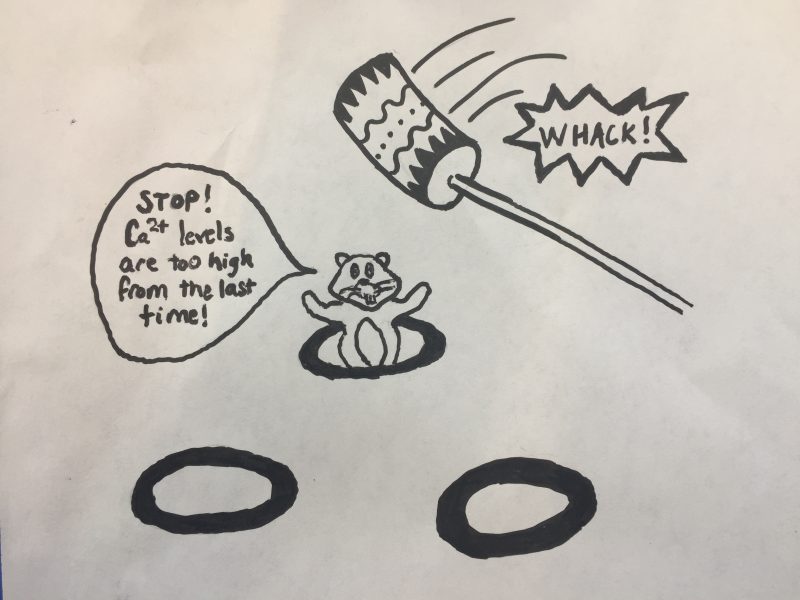Concussions are a growing concern in athletics as we learn more about the consequences of multiple concussions and long-term dangers. Not only are large traumatic concussions of concern, mild traumatic brain injuries (TBI) that occur repetitively can also be damaging.
After the trauma of a concussion, the cell membrane is disrupted from stretching and increases the permeability of ions across the membrane. Large amounts of sodium and calcium enter the cell while potassium leaves the cell. Typically, sodium enters the cell for depolarization and potassium exits the cell only to re-establish the resting potential after depolarization. The flux of ions therefore, induces spontaneous depolarization of neurons.
Potassium levels are quickly re-establishing by potassium pumps. However, potassium pumps require energy from the hydrolysis of ATP to move potassium back into the cell. This requires a lot of ATP. Cells produce ATP through glycolysis in the mitochondria. Glycolysis uses sugars such as glucose to produce ATP, reducing power and pyruvate. Under normal conditions, pyruvate is converted to acetyl-coa and enters the citric acid cycle to produce further reducing power. The reducing power is used in the electron transport chain to produce large quantities of ATP. If glycolysis goes into overdrive, the pyruvate will be converted to lactate which is highly inefficient for ATP production. This hyperglycolysis depletes energy stores quickly and is unsustainable for the cell. Additionally, lactate can cause neuronal dysfunction, changes in blood brain barrier permeability, and brain inflammation, which are all associated with long-term damage triggered by concussions.

This period of hyperglycolysis lasts about 24 hours before the polar opposite process occurs. For this part of the story calcium is the star and villain. To combat high levels of calcium, the cell sequesters calcium in the mitochondria. However, the stress of sequestering calcium leads to the increase in reactive oxygen species (ROS) that typically act as signaling molecules. ROS impairs the mitochondria’s ability to perform glycolysis, which causes hypoglycolysis. As a result, the cell is in an extreme low energy state. During the period of hypoglycolysis, working memory is impaired. This phase will last between two and four weeks depending on the individual.
Neurometabolism gradually returns to normal, alleviating many of the symptoms. However, this can be deceiving because the brain is often inflamed for up to a year after the trauma. Though not completely understood, the event of repeated concussions can have long-term implications for individuals, such as the development of chronic traumatic encephalopathy (CTE) which is similar to Alzheimer’s and Parkinson’s.
The most vulnerable time for a repeated concussion is during the recovery period of a concussion. If a second concussion occurs while the cell is in hypoglycolysis, it is hypothesized that neurons cannot combat the extreme efflux of potassium as ATP in the cell is depleted. Therefore, it is common protocol to prohibit individuals with concussions to partake in activities that risk another concussion. A challenge is that recovery time differs greatly between individuals which makes it difficult to ascertain when the individual has recovered. More research in the indicators of concussions and the recovery thereof are essential to properly treat concussions and mild TBIs.
